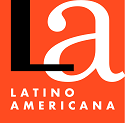Gestão integral da segurança hídrica: diagnóstico, desafios e alternativas multissetoriais para o uso sustentável do recurso
Palavras-chave:
Segurança hídrica, gestão multissetorial, escassez hídrica, governança sustentávelResumo
A pesquisa teve como objetivo analisar a situação hídrica no departamento de Ica (Peru), identificando os fatores que agravam a escassez hídrica e propondo estratégias integradas de gestão sustentável. Utilizou-se uma abordagem mista, combinando métodos qualitativos e quantitativos: entrevistas semiestruturadas com autoridades, especialistas e usuários, além de pesquisas realizadas com 295 pessoas de áreas urbanas e rurais. O estudo revelou que a escassez hídrica em Ica constitui um problema estrutural agravado pela superexploração de aquíferos, infraestrutura hídrica precária e coordenação institucional limitada. As partes interessadas concordaram com a necessidade urgente de promover soluções conjuntas, como recarga artificial de aquíferos, reuso de águas residuais, controle de poços ilegais e modernização de canais de irrigação. Concluiu-se que a segurança hídrica em Ica requer governança participativa e multissetorial, onde o Estado, as empresas e a sociedade civil compartilham responsabilidades para garantir o acesso equitativo e sustentável à água diante dos efeitos das mudanças climáticas.
Referências
Andrago,Angelakis, A. N., Asano, T., Bahri, A., Jimenez, B., & Tchobanoglous, G. (2018). Water reuse: From ancient to modern times and the future. Frontiers in Environmental Science, 6, 26. https://doi.org/10.3389/fenvs.2018.00026
Barichivich, J., Gloor, E., Peylin, P., Brienen, R. J. W., Schöngart, J., Espinoza, J. C., & Pattnayak, K. C. (2018). Recent intensification of Amazon flooding extremes driven by strengthened Walker circulation. Science Advances, 4(9), eaat8785. https://doi.org/10.1126/sciadv.aat8785
Budds, J., & Hinojosa, L. (2012). Restructuring and rescaling water governance in mining contexts: The co-production of waterscapes in Peru. Water Alternatives, 5(1), 119–137. https://www.wateralternatives.org/index.php/volume5/v5issue1/161-a5-1-8
Cai, W., Borlace, S., Lengaigne, M., et al. (2014). Increasing frequency of extreme El Niño events due to greenhouse warming. Nature Climate Change, 4(2), 111–116. https://doi.org/10.1038/nclimate2100
Dai, L., Farrelly, M., & Rijke, J. (2022). Assessing the soundness of water governance. International Journal of Water Resources Development, 38(7), 1086–1106. https://doi.org/10.1080/02508060.2022.2048487
Delgado, E., Lazo, J., & Egúsquiza, A. (2025). Modeling and predicting LULC changes in Ica (Peru) 1990–2030. Environmental Sciences Europe, 37, 181. https://doi.org/10.1186/s12302-025-01181-y
Echevin, V., Koseki, S., Espinoza, J. C., & Takahashi, K. (2018). Forcings and evolution of the 2017 Coastal El Niño off northern Peru and Ecuador. Frontiers in Marine Science, 5, 367. https://doi.org/10.3389/fmars.2018.00367
Esteve-Llorens, X., Vázquez-Rowe, I., Moreira, M. T., & Feijoo, G. (2022). Beyond yields: environmental sustainability in Peruvian agro-exports. Science of the Total Environment, 819, 152083. https://doi.org/10.1016/j.scitotenv.2022.152083
Fernández-Escalante, E., Pedraza-García, P., & Calera, A. (2020). Evolution and sustainability of groundwater use from the Ica aquifers for the most profitable agriculture in Peru. Hydrogeology Journal, 28(8), 2601–2621. https://doi.org/10.1007/s10040-020-02176-6
Gómez, R., Del Villar, S., & Montero, E. (2023). Cooperative water-sharing agreements between highlands and coastal users: Tambo–Santiago–Ica basin. International Journal of Water Resources Development, 39(6), 927–948. https://doi.org/10.1080/07900627.2023.2165048
Gonzales, E., Álvarez, V., & Gonzales, K. (2025). Two decades of groundwater variability in Peru using GRACE/GRACE-FO (2003–2023). Applied Sciences, 15(14), 8071. https://doi.org/10.3390/app15148071
Grafton, R. Q., Williams, J., Perry, C. J., et al. (2018). The paradox of irrigation efficiency. Science, 361(6404), 748–750. https://doi.org/10.1126/science.aat9314
Hoekstra, A. Y., & Mekonnen, M. M. (2012). The water footprint of humanity. Proceedings of the National Academy of Sciences, 109(9), 3232–3237. https://doi.org/10.1073/pnas.1109936109
Jaramillo, M. F., & Restrepo, I. (2017). Wastewater reuse in agriculture: A review of its limitations and benefits. Sustainability, 9(10), 1734. https://doi.org/10.3390/su9101734
Lankford, B. A., et al. (2023). Resolving the paradoxes of irrigation efficiency. Agricultural Water Management, 280, 108328. https://doi.org/10.1016/j.agwat.2023.108328
Mekonnen, M. M., & Hoekstra, A. Y. (2011). The green, blue and grey water footprint of crops and derived crop products. Hydrology and Earth System Sciences, 15(5), 1577–1600. https://doi.org/10.5194/hess-15-1577-2011
Mekonnen, M. M., & Hoekstra, A. Y. (2014). Water footprint benchmarks for crop production. Ecological Indicators, 46, 214–223. https://doi.org/10.1016/j.ecolind.2014.06.013
Mishra, S., et al. (2023). Use of treated sewage or wastewater as irrigation water: Impacts and opportunities. Case Studies in Chemical and Environmental Engineering, 8, 100428. https://doi.org/10.1016/j.cscee.2023.100428
Nemati, M., et al. (2023). Residential water conservation and the rebound effect. Water Resources Research, 59(12), e2022WR032169. https://doi.org/10.1029/2022WR032169
Opcionales adicionales (apoyan contexto Ica y Perú):
Angelakis, A. N., et al. (2014). Water reuse: Overview of current practices and trends. Water Utility Journal, 8, 67–78. https://www.ewra.net/wuj/pdf/WUJ_2014_08_07.pdf
Oshun, J., et al. (2021). Interdisciplinary water development in the Peruvian Andes (co-producción). Hydrology, 8(3), 112. https://doi.org/10.3390/hydrology8030112
Pei, D., et al. (2024). Agricultural water rebound effect and its driving factors. Agricultural Water Management, 297, 108739. https://doi.org/10.1016/j.agwat.2024.108739
Pronti, A., de Muro, P., & Rota, R. (2024). Land concentration, food exports and water grabbing in the Ica Valley, Peru. World Development, 179, 106378. https://doi.org/10.1016/j.worlddev.2024.106378
Rice, J., Wutich, A., & Westerhoff, P. (2016). Comparing de facto wastewater reuse and its public acceptance. Environmental Science & Policy, 61, 101–112. https://doi.org/10.1016/j.envsci.2016.03.004
Richey, A. S., Thomas, B. F., Lo, M.-H., et al. (2015). Quantifying renewable groundwater stress with GRACE. Water Resources Research, 51(7), 5217–5237. https://doi.org/10.1002/2015WR017349
Salmoral, G., et al. (2020). Reconciling irrigation demands for agricultural expansion with environmental sustainability: The case of Ica. Journal of Cleaner Production, 277, 123539. https://doi.org/10.1016/j.jclepro.2020.123539
Scanlon, B. R., et al. (2012). Groundwater depletion and sustainability of irrigation in the US High Plains and Central Valley. Proceedings of the National Academy of Sciences, 109(24), 9320–9325. https://doi.org/10.1073/pnas.1200311109
Schwarz, J., et al. (2017). Globalization and the sustainable exploitation of scarce groundwater: The Ica–Villacurí aquifer. Journal of Cleaner Production, 147, 231–241. https://doi.org/10.1016/j.jclepro.2017.01.074
Takahashi, K., et al. (2019). The very strong coastal El Niño in 1925 in the far-eastern Pacific. Climate Dynamics, 52, 7389–7415. https://doi.org/10.1007/s00382-017-3702-1
Underhill, V. (2023). Global Groundwater: California, Palestine and Peru. Water Alternatives, 16(1), 191–203. https://www.water-alternatives.org/index.php/alldoc/articles/vol16/v16issue1/694-a16-1-11/file
Vázquez-Rowe, I., et al. (2016). Environmental profile of green asparagus in a hyper-arid environment. Journal of Cleaner Production, 112, 2505–2517. https://doi.org/10.1016/j.jclepro.2015.10.074
Vázquez-Rowe, I., et al. (2017). Sustainable water management in agriculture under hyper-aridity. Science of the Total Environment, 601–602, 425–437. https://doi.org/10.1016/j.scitotenv.2017.05.161
Xiong, R., et al. (2021). Improving the scientific understanding of the paradox of irrigation efficiency. Water Resources Research, 57(5), e2020WR029397. https://doi.org/10.1029/2020WR029397
Xu, H., et al. (2022). Drivers of the irrigation water rebound effect. Agricultural Water Management, 268, 107681. https://doi.org/10.1016/j.agwat.2022.107681
Yglesias-González, M., et al. (2023). Reflections on the impact and response to the Peruvian 2017 Coastal El Niño. PLOS ONE, 18(9), e0290767. https://doi.org/10.1371/journal.pone.0290767
Publicado
Edição
Seção
Licença
Copyright (c) 2025 César Adrian Labeguerre Nakada, Gloria Inés Barboza Palomino, Leticia Tapia-Oré

Este trabalho está licenciado sob uma licença Creative Commons Attribution-NonCommercial-NoDerivatives 4.0 International License.
CC Reconocimiento-NoComercial-SinObrasDerivadas 4.0





.jpg)
_de_logo.jpg)
















